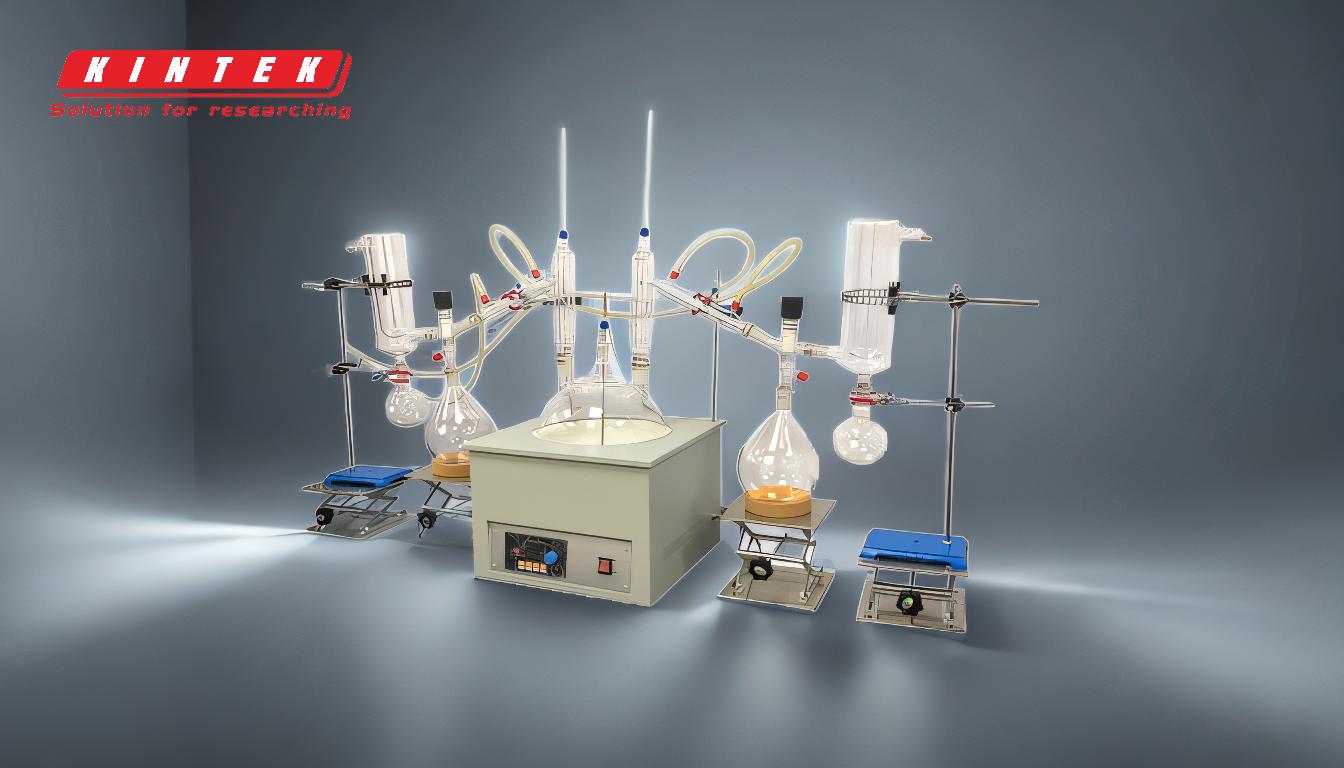Vacuum distillation is a specialized separation technique used to purify or separate compounds with high boiling points that may decompose at their normal boiling temperatures. By reducing the pressure below atmospheric levels, the boiling points of these compounds are lowered, enabling distillation at reduced temperatures. This method is particularly useful for thermally sensitive materials and is widely applied in industries such as petrochemicals, pharmaceuticals, and desalination. The process involves evaporating the liquid mixture under vacuum, condensing the vapors, and collecting the purified distillate. It offers advantages such as reduced thermal degradation, higher purity, and energy efficiency, making it a critical process in industrial and laboratory settings.
Key Points Explained:

-
Principle of Vacuum Distillation:
- Vacuum distillation operates on the principle that the boiling point of a liquid decreases as the surrounding pressure is reduced. This allows compounds with high boiling points to vaporize at lower temperatures, preventing thermal decomposition.
- The process is governed by the relationship between vapor pressure and external pressure. When the vapor pressure of a component equals the surrounding pressure, it begins to boil and vaporize.
-
Applications of Vacuum Distillation:
- Industrial Applications: Used in petrochemical refineries to separate crude oil fractions with high boiling points, such as heavy oils and lubricants. It prevents degradation and polymerization of sensitive compounds.
- Pharmaceuticals: Employed to purify heat-sensitive compounds and obtain high-purity samples without decomposition.
- Desalination: Utilized in large-scale desalination plants to remove salt from seawater by evaporating water at lower temperatures under vacuum.
-
Advantages of Vacuum Distillation:
- Reduced Thermal Degradation: Lower operating temperatures minimize the risk of thermal decomposition or polymerization of sensitive compounds.
- Energy Efficiency: Requires less energy compared to atmospheric distillation due to lower boiling points.
- Higher Purity and Yield: Enables the separation of close-boiling mixtures with fewer equilibrium stages, resulting in higher purity and yield.
- Cost Savings: Reduces the capital cost of distillation columns by decreasing their height and diameter, though operating costs may be slightly higher.
-
Process Details:
- The liquid mixture is heated under reduced pressure in a distillation column. The vapors formed are then condensed and collected as the distillate.
- Vacuum distillation can be combined with other techniques, such as steam or fractional distillation, to enhance separation efficiency, especially for aromatic compounds.
-
Equipment and Considerations:
- Vacuum Pump: Essential for creating and maintaining the reduced pressure environment.
- Condenser: Used to cool and condense the vapors back into liquid form.
- Distillation Column: Designed to handle lower pressures and temperatures, often with specialized materials to prevent corrosion or degradation.
- Safety Measures: Proper sealing and monitoring are required to maintain the vacuum and prevent leaks or contamination.
-
Limitations and Challenges:
- Higher Operating Costs: Maintaining a vacuum requires additional energy and equipment, increasing operational expenses.
- Complexity: The process is more complex than atmospheric distillation, requiring precise control of pressure and temperature.
- Material Sensitivity: Some compounds may still degrade under vacuum conditions, necessitating careful optimization of process parameters.
-
Comparison with Atmospheric Distillation:
- Atmospheric distillation operates at standard pressure and higher temperatures, making it unsuitable for heat-sensitive compounds.
- Vacuum distillation is preferred for high-boiling-point compounds (above 392°F or 200°C) that would otherwise decompose under atmospheric conditions.
By leveraging the principles of reduced pressure and lower temperatures, vacuum distillation provides a versatile and efficient method for separating and purifying compounds that are challenging to process using traditional distillation techniques. Its applications span a wide range of industries, making it a cornerstone of modern chemical and industrial processes.
Summary Table:
| Aspect | Details |
|---|---|
| Principle | Boiling point decreases under reduced pressure, enabling lower-temperature distillation. |
| Applications | Petrochemicals, pharmaceuticals, desalination. |
| Advantages | Reduced thermal degradation, energy efficiency, higher purity and yield. |
| Equipment | Vacuum pump, condenser, distillation column. |
| Limitations | Higher operating costs, process complexity, material sensitivity. |
Discover how vacuum distillation can optimize your processes—contact our experts today!












